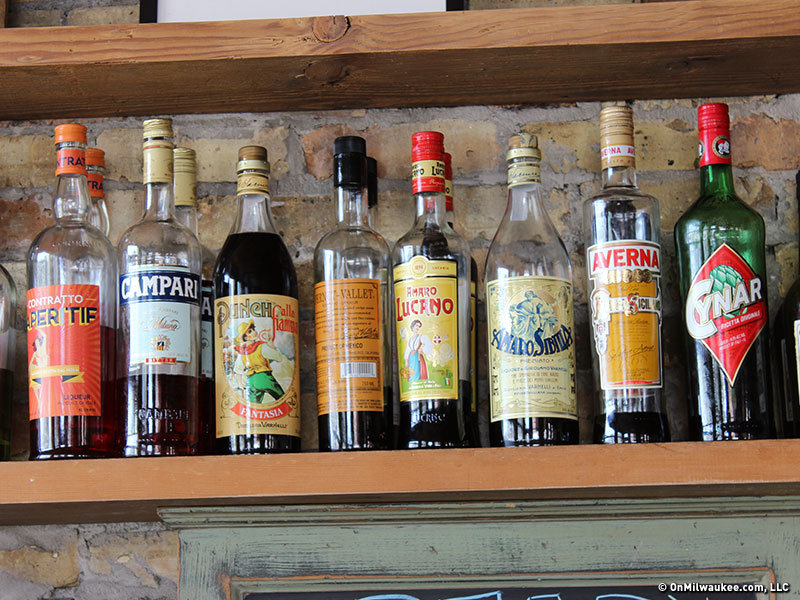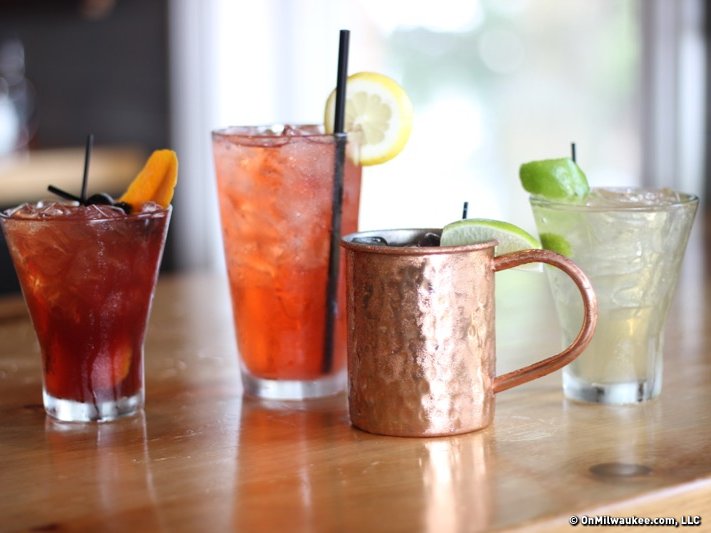"Bar Month" at OnMilwaukee is brought to you by Miller Brewing Company, calling Milwaukee home since 1855. For the entire month of March, we're serving up fun articles on bars, clubs and beverages – including guides, the latest trends, bar reviews, the results of our Best of Bars poll and more. Grab a designated driver and dive in!
Hoppy beer. Dark chocolate. Coffee.
A trend toward bitter flavors is sweeping U.S., and it’s playing out in the cocktail scene in some truly fascinating ways. But to truly understand what’s happening behind bars across the country, it helps to have a bit of background about these intriguing and mysterious elixirs.
"My first introduction was probably a Jägermeister," says Guy Rehorst, founder of Great Lakes Distillery. "And it was probably at Morton’s up in Cedarburg. Of course, I didn’t like it at first. That level of bitterness is something of an acquired taste. You often don’t love it right away. But when you try it a second and third time, you begin to see it in a different light. And I think that’s true for a lot of the bitter liqueurs."
And Rehorst isn’t alone. For many in America, the introduction to bitter liqueurs begins with a shot of Jägermeister, a German half-bitter which contains a complex roster of over 50 ingredients and an unmistakably strong flavor.
But the oft-misunderstood liqueur didn’t begin as an ingredient meant for Jäger-bombs. In fact, in Germany, Jägermeister has been enjoyed since its inception in the 1930s as an after-dinner drink meant to settle the stomach and aid in digestion.
"We all have an innate aversion to bitter tastes," writes author Jennifer McLagan in her book, "Bitter: A Taste of the World's Most Dangerous Flavor," wherein she explains that the inclination to reject bitter substances is a biological safeguard against the ingestion of potentially poisonous substances.
But the body’s reaction to bitter also kicks the body into overdrive, activating enzymes, jump-starting digestion and stimulating the metabolism. Bitter substances also often contain sulfur-based compounds which are believed to support the natural detoxification pathways in the liver.
And that’s part of what makes bitter spirits so intriguing.
From pharmacy to pleasure
Countries throughout the world have made unique contributions to the bitter, botanical liqueur landscape. And some recipes go back hundreds of years. There’s Becherovka in Russia, Suze in Switzerland, Salers in France, Amaro and Vermouth in Italy, and Unicum in Hungary.
But it’s only recently that producers in the States have hopped on board. The past few years have seen a mini-boom of American-made bitter liqueurs, including Leopold Bros. Aperitivo (Colorado), St. George Spirits Bruto Americano (California), Don Ciccio e Figli Cinque Aperitivo (Washington D.C.), St. Agrestis (New York) and Letherbee Fernet (Illinois).
And Milwaukee may soon make a contribution to the pot.
Rehorst, who recently invested in the technology that measures the quantity of alcohol in liqueurs (a necessity to meet requirements for labeling), says he’s been toying with the idea of creating a bitter liqueur for a number of years.
"We’re stepping into the realm of liqueurs with our recently released orange liqueur," he says. "I love Campari, and I’d love to do a variation on it. And maybe something a bit more approachable for people who are put off by the bitterness."
Historically, most bitter, botanical liqueurs originated as medicine, which was created by herbalists, pharmacists and monks. Spirits, which were an excellent preservative, were used as a base for medicine as well as a disinfectant and solvent. Vermouth has been used for centuries to help cure stomach ailments, and before the time of Hippocrates, Greeks were mixing herbs with wine. In fact, liqueurs were state of the art in terms of curative medicine.
The recipes for these bitter elixirs (eventually called liqueurs) are traditionally closely guarded. Even today, the recipes behind many brands still remain secret, creating a shroud of mystery and cabal.
"There’s a major smokescreen surrounding each brand and the production of these products," notes Jordan Burich, the beverage mastermind behind Sprezzatura, the Italian pop-up concept which is just beginning to make a splash in Milwaukee. "And you really end up with all these myths about origin. There’s so much mystery surrounding various brands. And that mythology just contributes to the romanticism surrounding these liqueurs."
That abstruseness is likely part of the reason bitter libations are trending. But it’s also because a new generation of bartenders has taken an interest.
"I think it’s like everything," says Rehorst. "When it comes to spirits, the bartender sets the trend. With bitter, we’re still in the stage where bartenders are very much hand-selling it. With the exception of people drinking Campari – either as a spritzer or negroni – there aren’t a lot of people just spying a bottle of something and asking to try it. But, at places like Buckley’s, The Palm Tavern and Goodkind, if you engage the bartender, you will inevitably end up trying something you’ve never had before."
Burich agrees.
"There’s a long history of people using bitter Italian spirits in cocktails and there’s a connection between Italian spirits and American drinking that got lost a bit after Prohibition. I think we’re starting to see a renaissance in that area. And Milwaukee is moving in that direction. You can see it best inside the industry, where bottles of Amaro are moving in and out of bars in a way they haven’t in past years."
But will bitter drinks be the next big thing to hit Milwaukee? Maybe, maybe not.
"I think the consumer is just starting to gain an appreciation for it," Rehorst says. "And I think we’ve probably got a long way to go before it’s fully embraced. But there are a lot of great products out there, and some interesting new things coming out."
Stay tuned for more in this series on bitter libations – including installments on apertifs, digestifs and vermouth – throughout the remainder of bar month.
As a passionate champion of the local dining scene, Lori has reimagined the restaurant critic's role into that of a trusted dining concierge, guiding food lovers to delightful culinary discoveries and memorable experiences.
Lori is an avid cook whose accrual of condiments and spices is rivaled only by her cookbook collection. Her passion for the culinary industry was birthed while balancing A&W root beer mugs as a teenage carhop, fed by insatiable curiosity and fueled by the people whose stories entwine with every dish. Lori is the author of two books: the "Wisconsin Field to Fork" cookbook and "Milwaukee Food". Her work has garnered journalism awards from entities including the Milwaukee Press Club. In 2024, Lori was honored with a "Top 20 Women in Hospitality to Watch" award by the Wisconsin Restaurant Association.
When she’s not eating, photographing food, writing or planning for TV and radio spots, you’ll find Lori seeking out adventures with her husband Paul, traveling, cooking, reading, learning, snuggling with her cats and looking for ways to make a difference.







